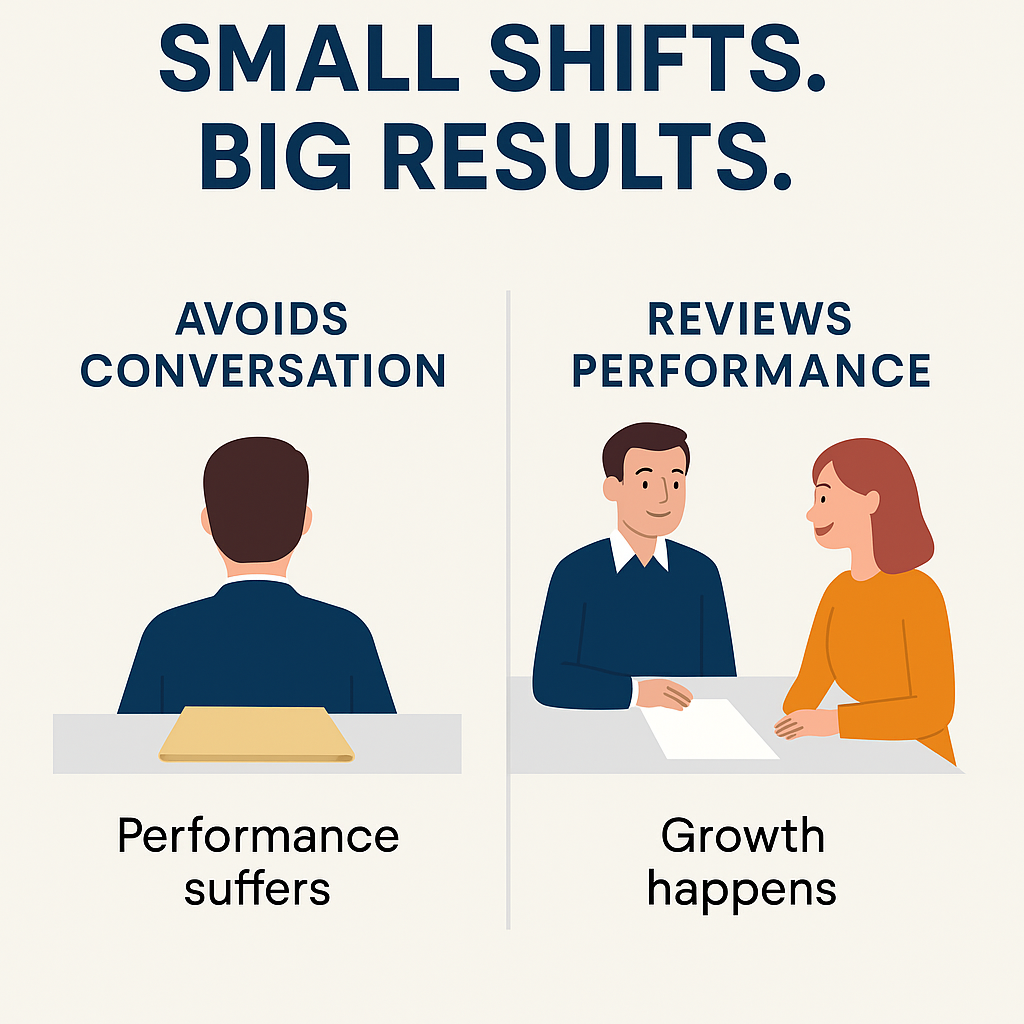Why “Nice” Leaders Avoid Difficult Conversations – And How to Help Them Take Action
You’ve seen it happen.
A performance issue is bubbling up in the team. It’s clear to everyone. Yet the leader—often warm, supportive, and well-liked—keeps avoiding the conversation. Despite training, frameworks, and encouragement, nothing changes. The issue lingers. So what’s really going on?
The Hidden Cost of “Nice” Leadership
It often comes down to this: the need to be liked outweighs the need to lead. Many leaders hesitate to address performance issues not because they don’t care, but because they do. They care about their relationships, about being seen as fair and they care about not upsetting people.
But here’s the truth: avoidance is not kindness. It’s a delay tactic that can damage team morale, fuel resentment, and weaken performance. Without effective leadership communication, tension festers, and people lose direction.
Shift the Mindset: From Confrontation to Review
You don’t need to turn empathetic leaders into hard-nosed managers. Instead, offer a path that suits their strengths.
Rather than diving straight into criticism, teach them how to give feedback through review conversations—constructive, calm, and focused on reflection rather than fault.
This approach is an essential part of building a feedback culture, and it works even for leaders who shy away from conflict.
The Review Conversation in 3 Simple Questions
To reduce the fear factor and start addressing issues, begin small. Use everyday moments—project debriefs, meeting reflections, or customer feedback—as a starting point.
Try these questions:
What did you do well?
Is there anything you would do differently next time?
(Optional) Here’s what I think you could do differently next time.
It’s a simple but powerful model for employee conversations that shift thinking and behaviour—without triggering defensiveness.
Make Feedback a Habit, Not a Hurdle
Want to improve conflict resolution across your leadership team? Don’t wait for performance reviews or disciplinary events. Encourage leaders to use this method in small, consistent doses. Frequent reflection builds confidence and normalises accountability.
This is how you start managing team tension—not with dramatic interventions, but with regular, respectful dialogue.
The Bigger Picture: Creating a Feedback Culture
When leaders consistently use this review method, they start developing a workplace where open feedback is the norm. Accountability grows, communication strengthens, and performance improves.
And perhaps most importantly, your “nice” leaders discover that they don’t have to change who they are. They just need a new way to lead. With the right tools, kindness and clarity can coexist.
Need Help Embedding This Approach?
Whether you’re developing feedback skills, managing team tension, or building a sustainable feedback culture, we can help. We’ve supported organisations for over 30 years in turning hesitant managers into confident leaders—without losing their humanity.
📞 1300 551 274
📧 team@teamfocusplus.com
Let’s help your leaders grow into the communicators your team needs.





